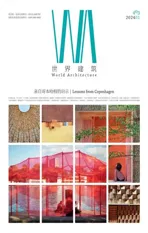直面英国粮食危机
——自给自足城市的韧性与食品安全设计探索
2024-01-27金佳怡音译朱明宇音译
金佳怡(音译),朱明宇(音译)
本研究聚焦于人口的增加以及人们在人口稠密的城市地区的集聚,对复杂和不稳定的食品供应系统提出了更高的要求。研究作者认为,这些系统必须适应并展现出韧性,这不仅仅是为了应对自然现象,如气候变化或新型冠状病毒疫情的影响,还要迎接社会经济和地缘政治干扰带来的挑战。
越来越多的国家日益依赖外部资源,这不仅会将环境影响转嫁给其他国家,而且加剧了全球生产和分配实践中的重大分歧。本研究主张采取更为道德、更可持续和更注重规划的方法来应对食品危机。为实现这一目标,本研究深入探讨了设计策略,致力于推动更可持续的农业城市主义,并从3 个经典城市乌托邦中汲取灵感:弗兰克·劳埃德·赖特的“广亩城市”,黑川纪章的“农业城市”以及MVRDV 的“猪城”。
通过对这些案例研究的审视,我们探索了一个以构建韧性、健康公平和食品安全为重点的自给自足城市的愿景。这涉及以民主方式对乡村空间进行系统性的扩张,提供了以前在城市环境中稀缺或难以实现的众多选择。该项目位于英格兰东北部的布莱斯港,其在北海的战略性位置确保了它能够很好地支持英国东海岸的风力发电场开发。该设计旨在应对人口增长、消费增加以及农业用地和食物来源减少所带来的日益严峻的挑战。由此产生的城市农业系统精心设计了一个模型,将废物流和未充分利用的空间纳入其中,并整合了清洁能源、海岸和当地资源管理的创新方法。该系统积极融合了自给自足的各种要素,为一个以人口密集、多层次结构为特征的农场网络铺平了道路。
本质上,该研究不仅指出了与食品安全相关的紧迫问题,还提出了一个前瞻性的解决方案,其变革潜力超越了表面的可能性。通过倡导城市规划和农业实践的范式转变,本文深入探讨了正在进行的17 项可持续发展目标(SDG)中的第2、3 和11 项。
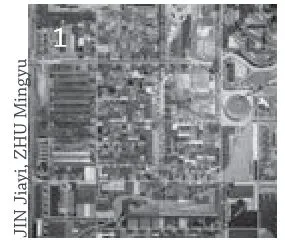
1 广亩城市规划方案,弗兰克·劳埃德·赖特,1935年 Broadacre City masterplan,Frank Lloyd Wright,1935
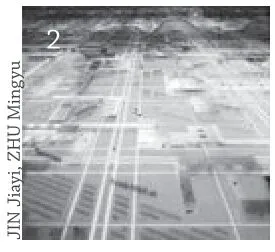
2 农业城市,黑川纪章,1960年 Agricultural City,Kisho Kurokawa,1960

3 猪城,MVRDV,2001年 Pig City,MVRDV,2001
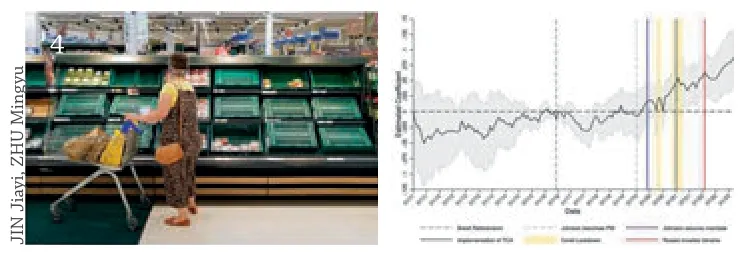
4 2011-2023年间,英国食品货架空空如也,食品价格飞涨,这与社会、经济和地缘政治的混乱有关 Empty food aisles in the UK and soaring food prices between 2011-2023 related to social,economic and geopolitical disruptions
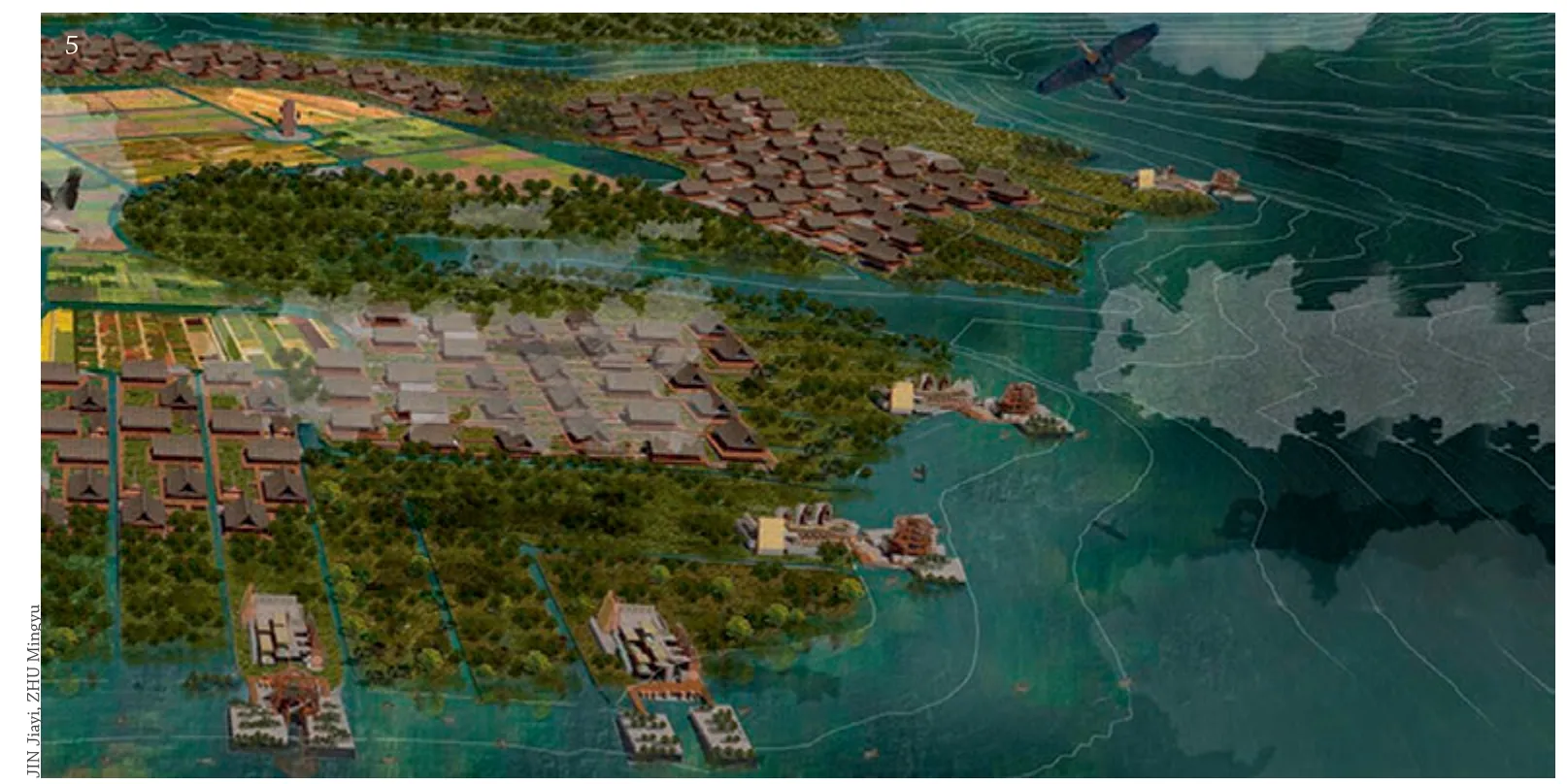
5 设想中布莱斯港的自给自足城市 The envisioned Self-Sustaining City situated in Blyth Harbour
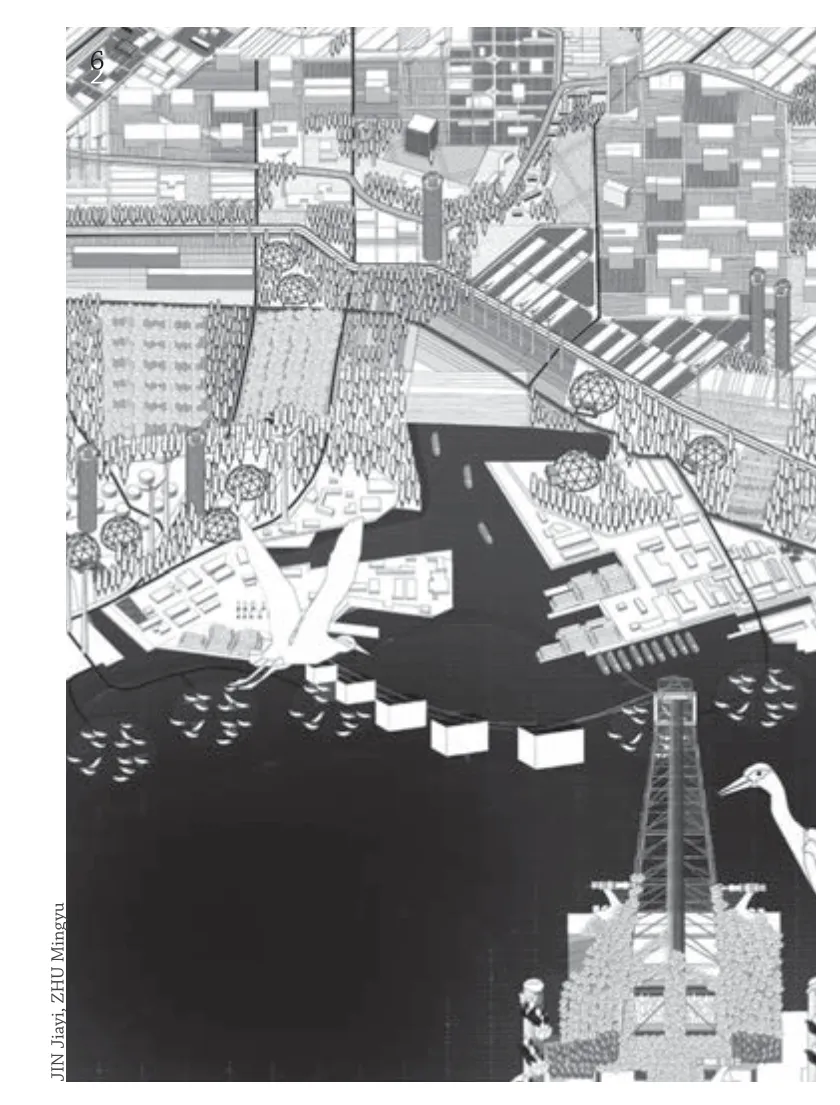
6 设想中的多层次结构,整合了能源、水和资源管理的综合方法 The envisaged multi-level structures that integrate comprehensive approaches to energy,water,and resource management
Conducted by Jiayi Jin and Mingyu Zhu,this study focuses on the rise in population and the concentration of people in densely populated urban areas,placing heightened demands on intricate and volatile systems for food supplies.The authors contend that these systems must adapt and demonstrate resilience,addressing not only natural phenomena like climate change or the repercussions of the COVID-19 crisis but also the challenges posed by socioeconomic and geopolitical disruptions.
The increasing dependence on external resources to meet national food demand not only transfers environmental impacts to other nations but also worsens a significant divide in global production and distribution practices.The authors advocate for a more ethical,sustainable and planning-focused approach to address the food crisis.In pursuit of this goal,they explore design strategies aimed at promoting a more sustainable agrarian urbanism,drawing inspiration from three classic urban utopias: Frank Lloyd Wright's Broadacre City,Kisho Kurokawa's Agricultural City,and MVRDV's Pig City.
By examining these case studies,the authors explore visionary concepts for crafting a selfsustaining city focused on resilience,health equity and food security.This involves democratically reorganising rural spaces in a systematic sprawl,offering a plethora of options that were previously scarce or challenging to attain within urban environments.The site is located in the Port of Blyth Harbour in the Northeast of England,its strategic North Sea location ensures it is well placed for supporting wind farm developments down the UK's east coast.The design hypothesis addresses the rising challenges posed by population growth and increased consumption,coupled with diminishing agricultural land and food sources.The resultant urban farming system meticulously crafts a model incorporating waste flows and underutilised spaces,and integrates innovative approaches to clean energy,coast,and local resource management.This system actively engages diverse elements of selfsufficiency,paving the way for a network of farms characterised by densely populated,multi-level structures.
In essence,the study not only pinpoints the pressing issues related to food security but also introduces a visionary solution that holds transformative potential beyond apparent possibilities.By advocating for a paradigm shift in both urban planning and agricultural practices,the paper provides insights into the ongoing discourse related to SDG 2,3 and 11.
